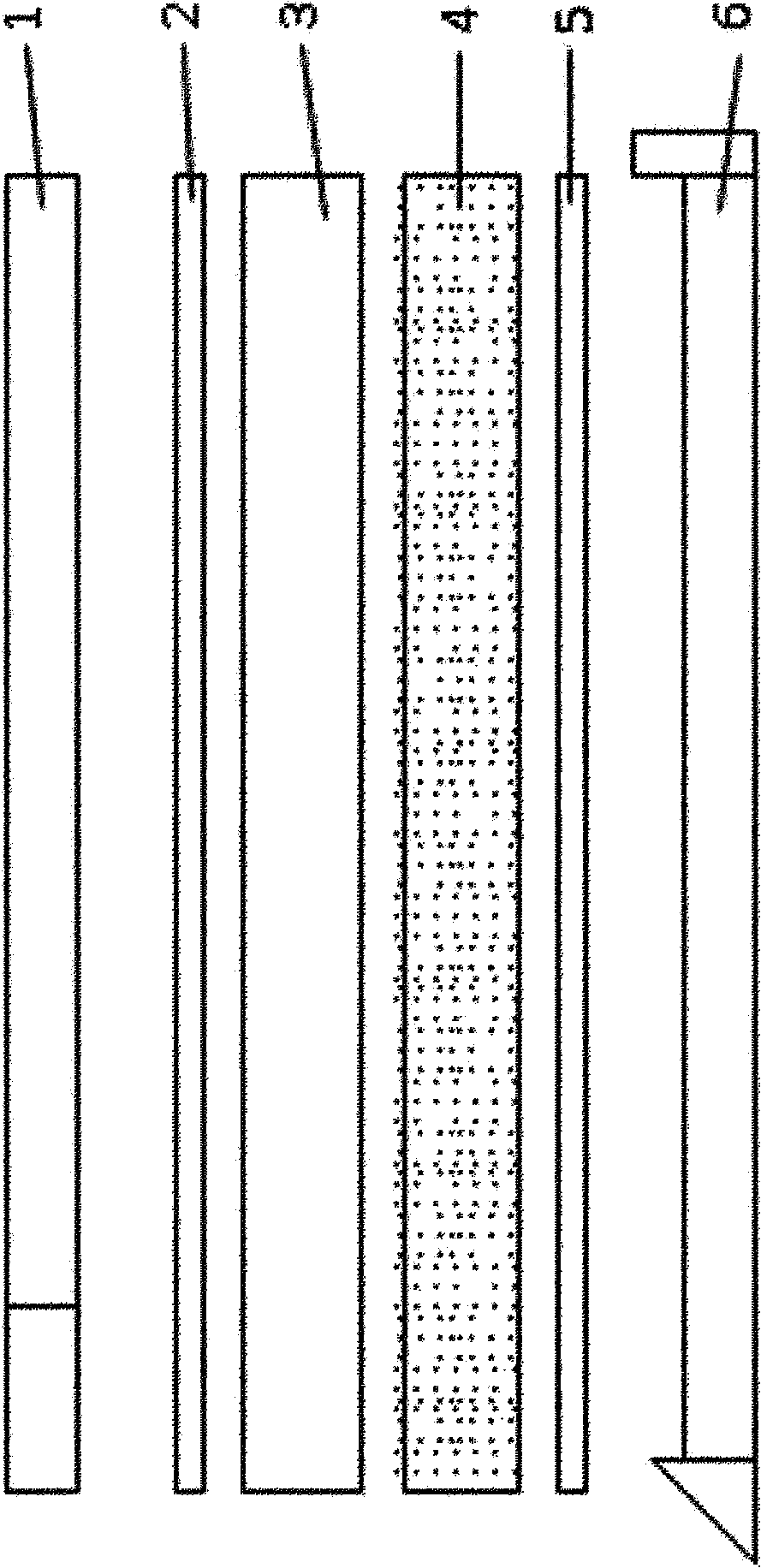Device and method for study on release of heavy metals and/or phosphate in sediments
A sediment and heavy metal technology, applied in the field of water ecology research, can solve the problems of less research on the impact of physical and chemical changes, and achieve the effect of strong applicability
- Summary
- Abstract
- Description
- Claims
- Application Information
AI Technical Summary
Problems solved by technology
Method used
Image
Examples
Embodiment 1
[0065] A slightly polluted lake sediment is selected as the research object, and the collected surface sediment and filtered raw water samples are placed in the sediment-water interface system. The main body of the system is a water tank 31 with a specification of 80cm× 60cm×45cm, containing 16cm of sediment and 8cm of water sample filtered by a 0.45μm filter membrane, the flow rate of the water sample is 0-2L / min, the first baffle 35 is 10cm away from the water inlet, each baffle 35 are 10cm apart, and the microelectrode control system is 20cm away from the right side of the water tank 31. The microelectrode control system is produced by Unisense, Denmark, and consists of a four-channel host, a motor controller 22, a pH probe 26, a DO probe 28, and an ORP probe. 27. The reference electrode 29 is composed of a DO probe 28 with a diameter of 25 μm, a pH probe 26 and an ORP probe 27 with a diameter of 1 mm, and a reference electrode 29 with a diameter of 8 mm. The motor controlle...
Embodiment 2
[0071] Select a moderately polluted lake sediment as the research object, place the sediment-water interface system in Example 1 with the surface sediment and the filtered raw water sample of the collection, the sediment of 16cm and the sediment of 8cm The water samples filtered by 0.45μm filter membrane, the flow rate of water samples is 0~2L / min, also equipped with microelectrode system, plate heavy metal and phosphate DGT, to study the sediment when the dissolved oxygen content is 40% and 90%. Release of heavy metals and phosphates. The results showed that as the experiment progressed, the DO content in the sediments began to decrease along the section direction, from about 130 μM to 0 μM, and the lowest point appeared at about 2-3 cm, which indicated that most of the heavily polluted lake sediments were in an anaerobic state. The dissolved oxygen content is low. When the dissolved oxygen content was 40% and 90%, the pH and ORP content in the sediment also showed a trend o...
Embodiment 3
[0073] A heavily polluted lake sediment was selected as the research object, and the collected surface sediment and the raw water sample filtered through a 0.45 μm filter membrane were placed in the sediment-water interface system in Example 1, and a total of 16 cm of water was installed. Sediment and 8cm of water sample filtered by 0.45μm filter membrane, the flow rate of the water sample is 0-2L / min, the system is also equipped with a microelectrode system, plate-type heavy metal and phosphate DGT, and the dissolved oxygen content is studied between 40% and 90% of the time, the release of heavy metals and phosphate in the sediment. The results show that: due to the serious pollution, the dissolved oxygen content of the sediment along the section drops quickly from 95 μM to 0 μM, and the lowest point appears at about 1-2 cm. When the dissolved oxygen content is 40% and 90%, the pH and ORP changes of the sediment along the profile direction generally show a downward trend, fro...
PUM
 Login to View More
Login to View More Abstract
Description
Claims
Application Information
 Login to View More
Login to View More - R&D
- Intellectual Property
- Life Sciences
- Materials
- Tech Scout
- Unparalleled Data Quality
- Higher Quality Content
- 60% Fewer Hallucinations
Browse by: Latest US Patents, China's latest patents, Technical Efficacy Thesaurus, Application Domain, Technology Topic, Popular Technical Reports.
© 2025 PatSnap. All rights reserved.Legal|Privacy policy|Modern Slavery Act Transparency Statement|Sitemap|About US| Contact US: help@patsnap.com



